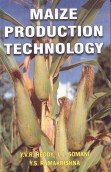Prasad Reddy Ramakrishna Somani (2 results)
Product Type
- All Product Types
- Books (2)
- Magazines & Periodicals
- Comics
- Sheet Music
- Art, Prints & Posters
- Photographs
- Maps
- Manuscripts & Paper Collectibles
Condition
Binding
- All Bindings
- Hardcover (2)
- Softcover
Collectible Attributes
- First Edition
- Signed
- Dust Jacket (1)
- Seller-Supplied Images
- Not Print on Demand (2)
Free Shipping
- Free US Shipping
Seller Location
Seller Rating
-
Krishi Vigyan Kendras for Rural Transformation
Published by Agrotech, 2008
ISBN 10: 8183211127ISBN 13: 9788183211123
Seller: Vedams eBooks (P) Ltd, New Delhi, India
Book
Hardcover. Condition: As New. Contents Preface. Preamble. 1. Introduction. 2. Development and activities of Krishi Vigyan Kendras. 3. Functions of Krishi Vigyan Kendras. 4. Methods of communication. 5. Linkages and coordination. 6. Yield gap analysis. 7. Impact of KVK activities. 8. Livelihood programmes. 9. Epilogue. References. Government of India proposed many projects/schemes to improve the socio economic conditions of farmers in India and wanted to transfer technologies from the research stations to farmers fields. The programme like national demonstration Operational Research Project Lab to Land watershed management etc and Krishi Vigyan Kendra was initiated during the year 1974 at Madur Karaikal Pondicherry under the host organization of Government of Pondicherry and subsequently placed under the administrative control of Tamil Nadu Agricultural University. Based on the activities of this KVK Planning Commission approved the proposal of the ICAR to establish 18 KVKs during the Fifth Five Year Plan. The strength of the KVKs reached to 541 as on today and it may be about 585 because each district in the country will have one KVK irrespective of the size and area of the district. The main functions of the KVKs are to conduct training programmes on farm trials front line demonstrations extension education livelihood programmes etc. The jurisdiction of the KVK is only within the district. This is hoped to cater the needs of farmers farm women rural youth artisans etc. in rural areas. There is no proper documentation till now. Hence this book is proposed to cover all aspects for the benefit of the scientists extension workers administrators planners etc. The KVKs are managed by State Agricultural Universities ICAR Institutions Non Governmental Organizations etc. These are wholly funded by Indian Council of Agricultural Research so as to improve the knowledge of the farmers and other rural people in technologies of agriculture and allied enterprises for improving productivities and profitabilities of farming activities so as to improve the socioeconomic conditions of the rural people. 192 pp.
-
Maize Production Technology
Published by Agrotech Pub, 2008
ISBN 10: 818321102XISBN 13: 9788183211024
Seller: Vedams eBooks (P) Ltd, New Delhi, India
Book
Hardcover. Condition: As New. Dust Jacket Included. Contents Preface. Acknowledgements. About the editors. About the book. 1. Importance and relevance of maize/P.R. Reddy. 2. Cultivation and management of maize in dryland and irrigated conditions/G. Jayaram Reddy. 3. Fertilizer management in maize/J.P. Goyal K.C. Laddha Sunil Dadeech and L.L. Somani. 4. Specially on corn types importance and production technologies/E. Satyanarayana and P. Shanthi. 5. Management strategies in maize/S. Hemalatha. 6. Maize diseases and their management/R. Ranga Reddy and G.L.K. Reddy. 7. Maize varieties and hybrids importance and development/R. Sai Kumar and G.L.K. Reddy. 8. Integrated pest management in maize/J.C. Sekhar and S. Venkatesh. 9. Technologies for value addition in maize/S. Venkatesh and J.C. Shekhar. 10. Mechanization of maize production in India/V.M. Mayande. 11. Communication skills for improving maize production/R. Joseph. 12. Concepts of frontline demonstrations/G. Subba Reddy and M.C. Swamy. 13. Maize economy in India/C.A. Rama Rao. 14. Recommended maize varieties/N.N. Singh. 15. Epilogue/V. Maruti. References. Subject index. One hundred and seventy frontline demonstrations were approved and sanctioned by the director Directorate of Maize Research (ICAR) New Delhi for Khariff season 2004 and he approved and sanctioned to hold a meeting/training for subject matter specialists working in promotion and development of maize in Andhra Pradesh. Accordingly it was conducted during August 26 27 2004. Fourteen experts were invited to present papers on different aspects of maize for discussion in the meeting. They presented and detailed discussion was made on each paper and new ideas were also incorporated. It covers all aspects. It will be useful to scientists extension workers policy makers etc. as information on maize is available in this book. Thus it is a ready reckoner. 192 pp.



